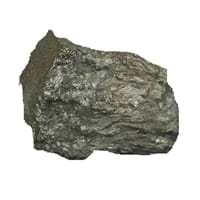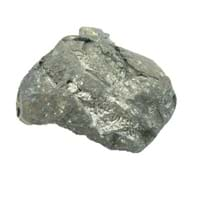Erbium Calcium Comparison
Periodic Table
Symbol
Er
Ca
Group Number
Not Available
2
16
Period Number
6
4
Block
f block
s block
Element Family
Lanthanide
Alkaline Earth
CAS Number
7440520
35
7440702
21
Space Group Name
P63/mmc
Fm_ 3m
Space Group Number
194.00
5
225.00
2
Facts
Interesting Facts
- Erbium metal is used as alloyed with Vanadium to make it softer.
- Recent studies shows that it is helpful for metabolism.
- Calcium ranks 5th rank in the list of earth’s abundance Percentage.
- It is found in the compound state.
- Gypsum or calcium sulfate is used as plaster and plaster of paris.
Sources
Mining
Earth's crust, Found in Minerals, Mining, Ores of Minerals
History
Who Discovered
Carl Gustaf Mosander
Humphry Davy
Discovery
In 1842
In 1808
Abundance
Abundance In Universe
2 * 10-7 %
22
7 * 10-3 %
3
Abundance In Sun
~0.0000001 %
26
~0.007 %
4
Abundance In Meteorites
0.00 %
36
1.10 %
4
Abundance In Earth's Crust
0.00 %
32
5.00 %
3
Abundance In Oceans
0.00 %
36
0.00 %
5
Abundance In Humans
Not Available
1.40 %
1
Uses
Uses & Benefits
- It has a tendency to get tarnished in the open air, but when alloyed with elements like erbium, vanadium, its hardness levels decreases.
- Its compounds like Erbium oxide is used in safety glasses of welders and metal workers.
- It is used as a reducing agent while preparing metals like thorium and uranium. It is also used as an alloying agent for metals such as aluminum, copper & lead.
- Calcium carbonate or lime stone is used in cement.
Industrial Uses
Chemical Industry
Chemical Industry
Medical Uses
NA
Dentistry, Pharmaceutical Industry
Other Uses
Alloys
Alloys
Biological Properties
Toxicity
Mildly Toxic
Non Toxic
Present in Human Body
No
Yes
In Blood
Not Available
60.50 Blood/mg dm-3
4
In Bone
Not Available
170,000.00 p.p.m.
1
Physical Properties
Melting Point
1,522.00 °C
28
839.00 °C
99+
Boiling Point
2,510.00 °C
99+
1,484.00 °C
99+
Appearance
Physical State
Solid
Solid
Color
Silvery White
Gray
Luster
Lustrous
NA
Hardness
Mohs Hardness
Not Available
1.75
17
Brinell Hardness
814.00 MPa
11
170.00 MPa
99+
Vickers Hardness
589.00 MPa
19
Not Available
Speed of Sound
2,830.00 m/s
28
3,810.00 m/s
19
Optical Properties
Allotropes
No
No
α Allotropes
Not Available
Not Available
β Allotropes
Not Available
Not Available
γ Allotropes
Not Available
Not Available
Chemical Properties
Chemical Formula
Er
Ca
Isotopes
Known Isotopes
31
8
19
20
Electronegativity
Pauling Electronegativity
1.24
36
1.00
99+
Sanderson Electronegativity
Not Available
0.95
24
Allred Rochow Electronegativity
1.11
29
1.04
34
Mulliken-Jaffe Electronegativity
Not Available
1.08
17
Allen Electronegativity
Not Available
1.03
39
Electropositivity
Pauling Electropositivity
2.76
18
3.00
9
Ionization Energies
1st Energy Level
589.30 kJ/mol
99+
589.80 kJ/mol
99+
2nd Energy Level
1,150.00 kJ/mol
99+
1,145.40 kJ/mol
99+
3rd Energy Level
2,194.00 kJ/mol
99+
4,912.40 kJ/mol
7
4th Energy Level
4,120.00 kJ/mol
33
6,491.00 kJ/mol
7
5th Energy Level
Not Available
8,153.00 kJ/mol
7
6th Energy Level
Not Available
10,496.00 kJ/mol
8
7th Energy level
Not Available
12,270.00 kJ/mol
12
8th Energy Level
Not Available
14,206.00 kJ/mol
15
9th Energy Level
Not Available
18,191.00 kJ/mol
12
10th Energy Level
Not Available
20,385.00 kJ/mol
16
11th Energy Level
Not Available
57,110.00 kJ/mol
3
12th Energy Level
Not Available
63,410.00 kJ/mol
3
13th Energy Level
Not Available
70,110.00 kJ/mol
3
14th Energy Level
Not Available
78,890.00 kJ/mol
4
15th Energy Level
Not Available
86,310.00 kJ/mol
5
16th Energy Level
Not Available
94,000.00 kJ/mol
6
17th Energy Level
Not Available
104,900.00 kJ/mol
7
18th Energy Level
Not Available
111,711.00 kJ/mol
8
Electrochemical Equivalent
2.08 g/amp-hr
28
0.75 g/amp-hr
99+
Electron Work Function
Not Available
2.87 eV
38
Other Chemical Properties
Ionization, Radioactive Isotopes, Solubility
Chemical Stability, Flammability, Ionization, Solubility
Atomic Properties
Atomic Number
68
99+
20
99+
Electron Configuration
[Xe] 4f12 6s2
[Ar] 4s2
Crystal Structure
Hexagonal Close Packed (HCP)
Face Centered Cubic (FCC)
Crystal Lattice
HCP-Crystal-Structure-of-Erbium.jpg#100
FCC-Crystal-Structure-of-Calcium.jpg#100
Atom
Number of Protons
68
99+
20
99+
Number of Neutrons
99
33
20
99+
Number of Electrons
68
99+
20
99+
Radius of an Atom
Atomic Radius
176.00 pm
18
197.00 pm
6
Covalent Radius
189.00 pm
19
176.00 pm
22
Van der Waals Radius
Not Available
231.00 pm
19
Atomic Weight
167.26 amu
99+
40.08 amu
99+
Atomic Volume
18.40 cm3/mol
25
29.90 cm3/mol
7
Adjacent Atomic Numbers
Valence Electron Potential
49.00 (-eV)
29
29.00 (-eV)
99+
Lattice Constant
355.88 pm
39
558.84 pm
9
Lattice Angles
π/2, π/2, 2 π/3
π/2, π/2, π/2
Lattice C/A Ratio
1.57
17
Not Available
Mechanical Properties
Density
Density At Room Temperature
9.07 g/cm3
99+
1.55 g/cm3
99+
Density When Liquid (at m.p.)
8.86 g/cm3
23
1.38 g/cm3
99+
Tensile Strength
Not Available
Not Available
Viscosity
Not Available
Not Available
Vapor Pressure
Vapor Pressure at 1000 K
0.00 (Pa)
20
25.50 (Pa)
3
Elasticity properties
Shear Modulus
28.30 GPa
25
7.40 GPa
99+
Bulk Modulus
44.40 GPa
27
17.00 GPa
99+
Young's Modulus
69.90 GPa
29
20.00 GPa
99+
Poisson Ratio
0.24
28
0.31
13
Other Mechanical Properties
Malleable
NA
Magnetic Properties
Magnetic Characteristics
Specific Gravity
9.07
32
4.58
99+
Magnetic Ordering
Paramagnetic
Diamagnetic
Electrical Properties
Electrical Property
Conductor
Conductor
Resistivity
0.86 nΩ·m
99+
33.60 nΩ·m
99+
Electrical Conductivity
0.01 106/cm Ω
99+
0.30 106/cm Ω
6
Electron Affinity
50.00 kJ/mol
21
2.37 kJ/mol
39
Thermal Properties
Specific Heat
0.17 J/(kg K)
34
0.63 J/(kg K)
7
Molar Heat Capacity
28.12 J/mol·K
11
25.93 J/mol·K
34
Thermal Conductivity
14.50 W/m·K
99+
201.00 W/m·K
5
Critical Temperature
Not Available
Not Available
Thermal Expansion
12.20 µm/(m·K)
31
22.30 µm/(m·K)
19
Enthalpy
Enthalpy of Vaporization
261.00 kJ/mol
35
150.00 kJ/mol
99+
Enthalpy of Fusion
17.20 kJ/mol
15
8.54 kJ/mol
99+
Enthalpy of Atomization
314.00 kJ/mol
33
184.00 kJ/mol
99+
Standard Molar Entropy
73.10 J/mol.K
11
41.60 J/mol.K
36
|
||
|
||
|












